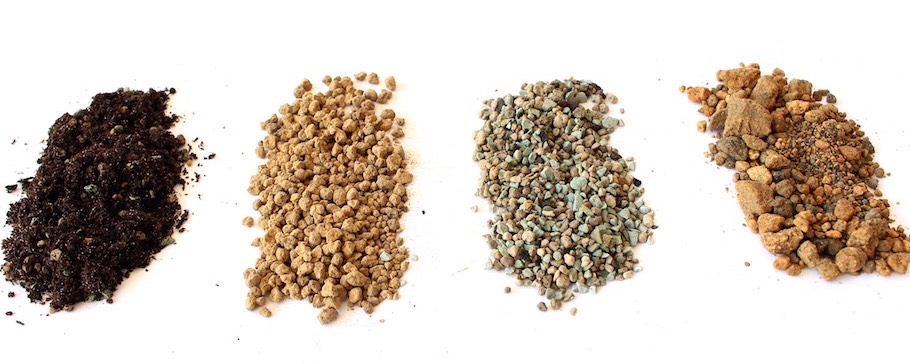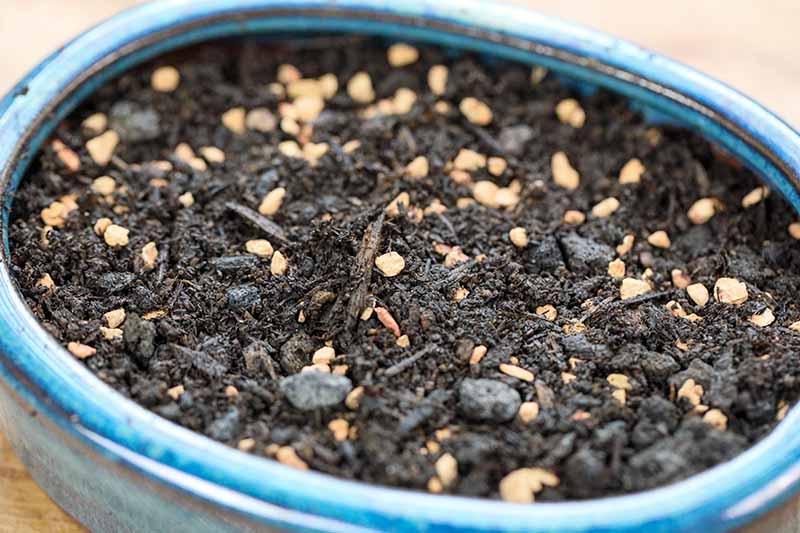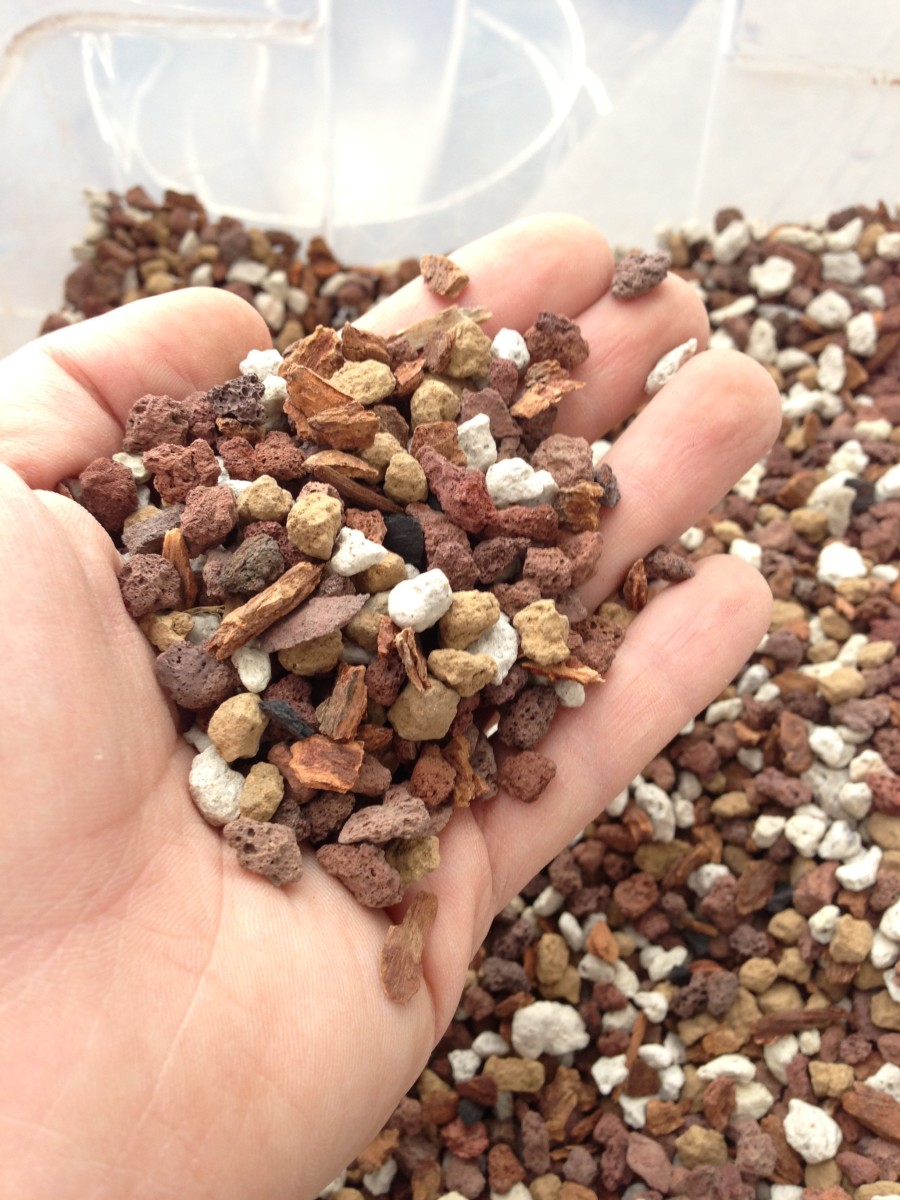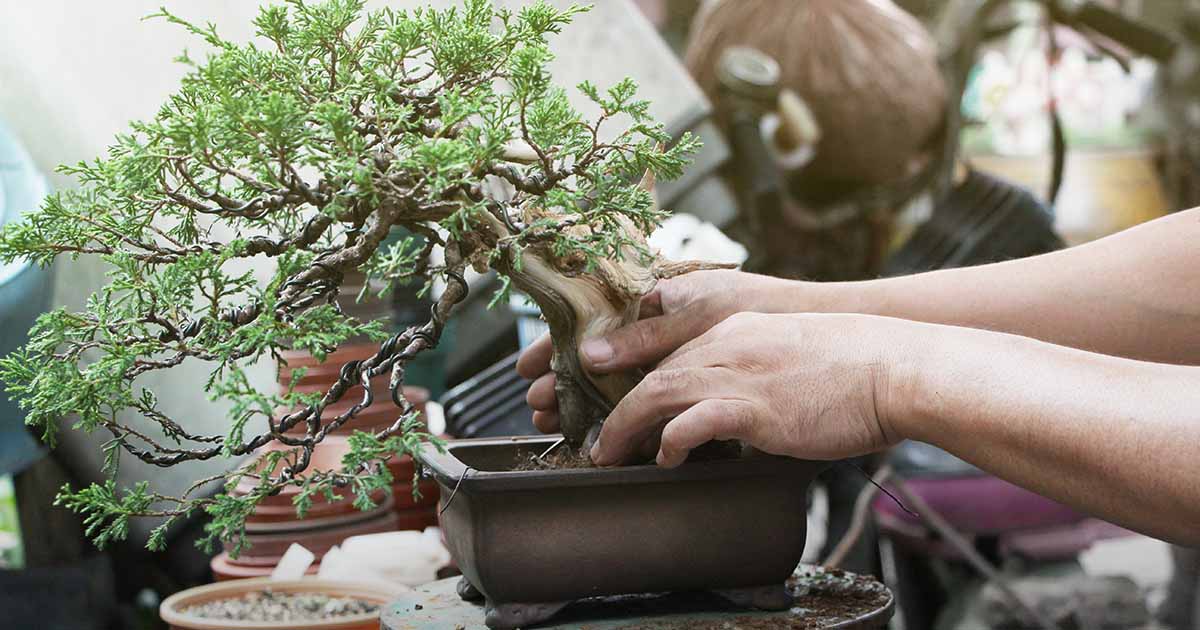On this page, we will explore the different sorts of soil and substrates Utilized in bonsai cultivation, which includes organic and inorganic selections.
We are going to also find out encouraged soil mixtures for various bonsai species, for instance deciduous, coniferous, and indoor kinds. From akadama and pumice to moss and river sand, we'll dive in the interesting planet of bonsai soil and assist you understand why it's a vital Element of cultivating these exquisite trees.

Bonsai soil
What is bonsai soil?
Bonsai soil is a specialized type of soil that is specifically formulated for growing and maintaining bonsai trees. Unlike regular garden soil, bonsai soil is well-draining and provides the necessary nutrients and moisture balance for the tree's root system. The composition of bonsai soil is carefully designed to meet the unique needs of bonsai trees, ensuring their health and longevity.
The importance of bonsai soil
The choice of soil plays a crucial role in the success of your bonsai tree. The right soil provides optimal drainage, allowing excess water to flow freely and preventing root rot. It also promotes a healthy and well-developed root system, which is essential for the overall health and growth of the tree. Bonsai soil retains moisture while allowing air to reach the roots, striking the perfect balance for the tree's needs. Choosing the right bonsai soil is essential for maintaining a healthy and thriving bonsai tree.
Bonsai substrates
What are bonsai substrates?
Bonsai substrates refer to the different materials that can be used to create the ideal soil composition for bonsai trees. These substrates are carefully chosen to meet the specific needs of different species of bonsai trees and to ensure proper water drainage and nutrient availability.
Different types of bonsai substrates
There are various types of bonsai substrates available, each with its own unique characteristics and benefits. Some common bonsai substrates include:
- Organic materials: These include ingredients such as bark, peat moss, and coconut coir. Organic substrates help retain moisture and provide essential nutrients to the bonsai tree.
- Inorganic supplies: These incorporate factors like pumice, lava rock, and akadama. Inorganic substrates present fantastic drainage, ensuring that excess drinking water would not accumulate around the roots from the bonsai tree.
- Soil amendments: These are generally substances which have been added for the soil mixture to enhance its Homes. Samples of soil amendments include things like perlite, vermiculite, and sand. They Increase the soil's aeration, drinking water-Keeping potential, and nutrient availability.
By understanding the different types of bonsai substrates and their Qualities, you could choose the most fitted a person for your personal bonsai tree's wants.
Organic or Inorganic Soils
Organic soils for bonsai
Organic and natural soils for bonsai are made up of natural resources for example bark, peat moss, coconut coir, and compost. These elements offer a abundant supply of nutrients for the bonsai tree and advertise nutritious root advancement. Natural soils also have great drinking water retention properties, making sure which the tree gets sufficient dampness involving watering sessions. On the other hand, it's important to notice that natural soils might break down after a while and come to be compacted, bringing about inadequate drainage and potential root issues.
Inorganic soils for bonsai
Inorganic soils for bonsai consist of components like pumice, lava rock, akadama, and soil amendments like perlite or vermiculite. These supplies have excellent drainage Houses, protecting against waterlogged soil and endorsing aeration across the roots. Inorganic soils are desired by several bonsai enthusiasts because of their longevity and talent to offer a stable setting for that bonsai tree's root procedure. Nevertheless, they may involve extra Recurrent watering and extra fertilization, as they do not maintain just as much dampness or nutrients as natural and organic soils.
Advantages and disadvantages of making use of natural and organic and inorganic soils for bonsai
Deciding upon among natural and inorganic soils for your personal bonsai tree is dependent upon many aspects, such as the particular species of tree, your climate, and private Tastes. Allow me to share the pros and cons of each and every:
Natural soils:
- Pros: Offer nutrients, good h2o retention, market wholesome root improvement.
- Disadvantages: May possibly break down as time passes, probable for inadequate drainage if not properly maintained.
Inorganic soils:
- Pros: Fantastic drainage, long-lasting, stable natural environment for roots.
- Disadvantages: Considerably less water retention, may perhaps have to have a lot more frequent watering and fertilization.
By looking at the positives and negatives of each natural and organic and inorganic soils, you may make an educated conclusion based on the specific requirements of your bonsai tree.
Soil factors
Important components of bonsai soil
Bonsai soil is often made up of three main parts: grit, organic and natural issue, and clay. These components operate alongside one another to build The best soil construction to the bonsai tree's root program.
- Grit: Grit, which include sand or perlite, offers drainage and aeration while in the soil. It helps protect against waterlogging and allows air to get to the roots.
- Organic and natural make any difference: Natural subject, which include compost or bark, supplies nutrients towards the bonsai tree. What's more, it aids keep humidity and Enhance the soil's All round construction.
- Clay: Clay particles provide some drinking water retention features and support bind the soil alongside one another. On the other hand, an excessive amount clay may lead to very poor drainage and compaction.
Purpose of each soil part
Each soil element plays an important role in developing a effectively-well balanced and healthful environment with the bonsai tree's roots.
- Grit: Grit offers the required drainage and aeration in the soil. It prevents the roots from sitting in stagnant water, lessening the risk of root rot and selling In general root well being.
- Natural and organic issue: Organic issue presents important nutrients for the bonsai tree. It aids in dampness retention and contributes to the overall construction in the soil.
- Clay: Clay particles help bind the soil alongside one another and supply some drinking water retention ability. However, it is important to equilibrium the amount of clay to avoid issues like poor drainage and compaction.
By knowing the roles of each soil component, you'll be able to develop a well balanced bonsai soil combine that meets the precise requires of the tree.

Recommended Bonsai soil mixtures
Common bonsai soil mixtures
There are several common bonsai soil mixtures that have been proven effective for various types of bonsai trees. These mixtures typically consist of a combination of inorganic substrates, organic matter, and soil amendments.
Some of the commonly used bonsai soil mixtures include:
- Akadama, pumice, and lava rock: This mixture is popular among bonsai enthusiasts for its excellent drainage and water retention properties.
- Akadama, lava rock, and organic subject: This combination combines the key benefits of inorganic substrates Along with the nutrient-rich Houses of organic subject.
- Pumice, perlite, and bark: This mixture gives superior drainage and aeration while retaining some dampness and offering nutrients.
They are just some examples of bonsai soil mixtures, and The best mixture will depend on the particular requirements of your respective bonsai tree and your weather.
Elements to take into consideration when choosing a bonsai soil combination
When picking out a bonsai soil mixture, it's important to take into consideration the following factors:
- Species of bonsai tree: Distinct species have various humidity and nutrient prerequisites. Investigation the precise wants of one's tree to pick a soil mixture that satisfies its specifications.
- Weather: The local weather you reside in can have an effect on the humidity retention Homes with the soil. Look at the common humidity and temperature close to you when choosing a soil combination.
- Watering habits: Your own watering habits and program need to align Together with the soil combination you select. Some mixtures have to have far more Recurrent watering, while others retain dampness for for a longer time durations.
- Price range: Some soil parts may be costlier than others. Take into account your finances when selecting a soil mixture.
By getting these factors under consideration, you'll be able to go with a bonsai soil combination that provides the very best increasing conditions for your personal tree.
Deciduous Bonsai soil
Very best soil composition for deciduous bonsai
Deciduous bonsai trees, such as maple or birch, have particular soil needs to guidance their advancement and health. The very best soil composition for deciduous bonsai normally includes a mixture of organic and natural make any difference, inorganic substrates, and soil amendments.
A proposed soil composition for deciduous bonsai may consist of:
- Akadama: Supplies good h2o retention though allowing for for drainage. Additionally, it releases nutrients little by little with time.
- Pumice: Promotes aeration and drainage inside the soil, stopping waterlogging.
- Bark or peat moss: Provides organic and natural subject to your soil, giving nutrients and dampness retention.
This soil composition makes sure that the roots of deciduous bonsai trees obtain the best stability of moisture, nutrients, and oxygen for optimum advancement.

Coniferous and Pine soil
Ideal soil mixture for coniferous and pine bonsai
Coniferous and pine bonsai trees have specific soil requirements due to their water retention needs and preference for acidic soil. An ideal soil mixture for coniferous and pine bonsai should provide good drainage while retaining moisture and maintaining the desired pH level.
A recommended soil mixture for click here coniferous and pine bonsai may include:
- Akadama: Provides excellent water retention while allowing for sufficient drainage. It releases nutrients slowly over time.
- Pumice: Encourages aeration and drainage from the soil, protecting against waterlogged roots.
- Peat moss: Provides organic and natural subject and acidity on the soil, generating a great pH amount for coniferous and pine trees.
This soil mixture makes certain that the roots of coniferous and pine bonsai trees get the best stability of humidity, nutrients, and acidity for his or her certain requirements.
Akadama
What's akadama?
Akadama is a variety of clay soil that is definitely broadly used in bonsai cultivation. It is actually recognized for its superb h2o retention Houses, which guarantee a steady offer of moisture into the bonsai tree's roots. Akadama can be prized for its ability to launch nutrients slowly and gradually with time, giving a regular source of nourishment for that tree.
Benefits of applying akadama in bonsai soil
Working with akadama in bonsai soil provides numerous Gains:
- Drinking water retention: Akadama has Outstanding h2o retention Qualities, allowing for it to hold humidity with out starting to be waterlogged. This ensures that the bonsai tree's roots receive a steady offer of water, advertising and marketing nutritious development.
- Nutrient launch: Akadama gradually releases nutrients in the soil as time passes, giving a constant source of nourishment with the bonsai tree. This decreases the necessity for Recurrent fertilization and assists retain a balanced nutrient profile.
- Aeration: In spite of its h2o retention abilities, akadama also presents satisfactory aeration to your bonsai tree's roots. It allows air to reach the root process, preventing concerns for instance root rot due to insufficient oxygen.
By incorporating akadama into your bonsai soil, you'll be able to make an optimal expanding setting for your personal tree, guaranteeing its wellbeing and vitality.

Lava rock
How lava rock benefits bonsai soil
Lava rock is a popular component in bonsai soil mixtures due to its excellent drainage and aeration properties. It is typically used in conjunction with other substrates to create the ideal soil composition for bonsai trees.
The benefits of lava rock in bonsai soil include:
- Drainage: Lava rock provides excellent drainage, preventing waterlogging and ensuring that excess water flows freely through the soil. This helps prevent root rot and provides a healthy environment for the roots to thrive.
- Aeration: The porous nature of lava rock enables air to circulate inside the soil, delivering oxygen towards the bonsai tree's root technique. Good aeration is essential for healthful root enhancement and In general tree progress.
- Longevity: Lava rock can be a resilient product that doesn't stop working effortlessly. This ensures that the soil framework remains stable after some time, reducing the need for frequent soil replacements.
Lava rock is available in various dimensions and styles, allowing for for personalisation depending on the precise requires within your bonsai tree and soil prerequisites.
Differing kinds of lava rock
There are actually differing kinds of lava rock that could be Employed in bonsai soil mixtures, which include:
- Black lava rock: Black lava rock is often a frequently utilised content in bonsai soil mixtures. It provides excellent drainage Houses and adds an aesthetic ingredient to the general presentation on the bonsai tree.
- Crimson lava rock: Red lava rock is yet another well known decision in bonsai soil mixtures. It offers comparable drainage and aeration Positive aspects as black lava rock but has a distinct reddish colour that provides visual fascination towards the container.
Both black and pink lava rocks are extensively accessible and can be very easily integrated into your bonsai soil mixture.
Potting
Essential guidelines for prosperous bonsai potting
Potting can be a vital procedure in bonsai cultivation, because it directly impacts the health and fitness and progress in the tree's roots. Here are some critical methods for productive bonsai potting:
- Choose the proper pot measurement: Decide on a bonsai pot that permits for root growth although nonetheless providing a snug in good shape. Stay clear of pots that are much too huge, since they may result in extreme soil humidity and weak root development.
- Use bonsai wire: Secure the tree within the pot applying bonsai wire to be sure stability. This prevents the tree from shifting or getting uprooted all through watering or strong winds.
- Trim and unfold the roots: Right before potting the bonsai tree, meticulously trim and distribute out the roots. This encourages outward development and helps prevent root tangling or root-bound concerns.
- Incorporate mesh screens: Place mesh screens about the drainage holes at the bottom of your pot to circumvent soil erosion and assure appropriate drainage.
- Use fresh new bonsai soil: When potting, constantly use contemporary bonsai soil to supply the required nutrients and ideal growing circumstances for your roots.
By next these crucial strategies, you'll be able to be certain a successful potting course of action and market the general health and progress within your bonsai tree.
The job of bonsai pots in soil dampness control
Bonsai pots Enjoy a vital role in soil dampness Manage, immediately impacting the health and progress of your tree. Bonsai pots are typically shallow and also have drainage holes, allowing extra drinking water to flee and stopping the soil from getting to be waterlogged.
The look of bonsai pots promotes evaporation and air circulation, which aids regulate soil dampness levels. The shallow depth and huge opening on more info the pot expose additional surface area area of your soil on the air, aiding in dampness evaporation. This helps prevent the roots from sitting down in excessively wet soil, lessening the chance of root rot along with other h2o-relevant issues.
Moreover, the drainage holes in bonsai pots let any extra h2o to flee, avoiding waterlogged soil and endorsing aeration around the roots. Proper aeration is essential for the wellbeing and advancement of the root process, making certain the bonsai tree gets the necessary oxygen for progress.
By utilizing bonsai pots made for powerful moisture Management, you can create a favorable setting for your personal bonsai tree's roots and encourage its Over-all well being and vitality.
In summary, picking out the right bonsai soil is vital for your results and health within your bonsai tree. Knowing the differing types of bonsai substrates, the function of organic and natural and inorganic soils, The real key components of bonsai soil, and the varied suggested soil mixtures will help you supply the ideal rising ailments for your personal bonsai tree. No matter if you do have a deciduous or coniferous bonsai, incorporating elements like akadama and lava rock can greatly enhance the soil's drainage and nutrient availability. On top of that, listening to potting techniques and applying bonsai pots designed for moisture control will more help the flourishing development of the bonsai tree. With appropriate knowledge and implementation of bonsai soil techniques, you may enjoy the elegance and artistry of bonsai cultivation For many years to come.
